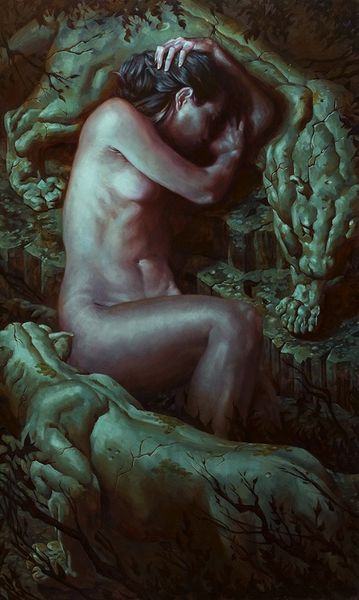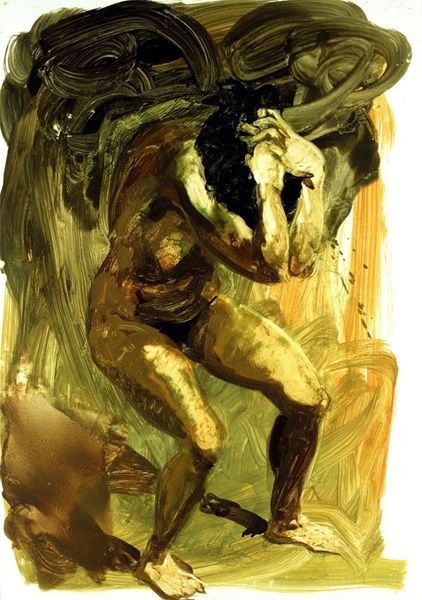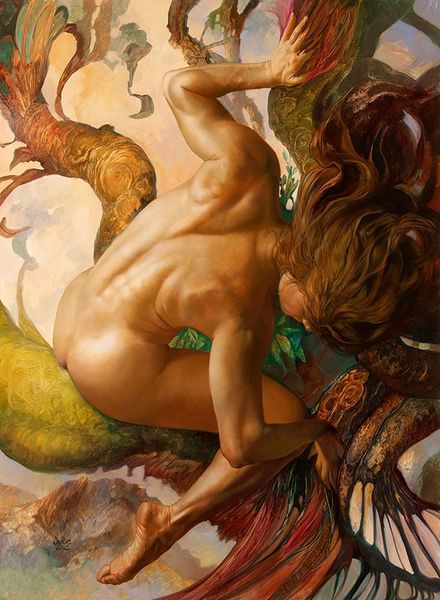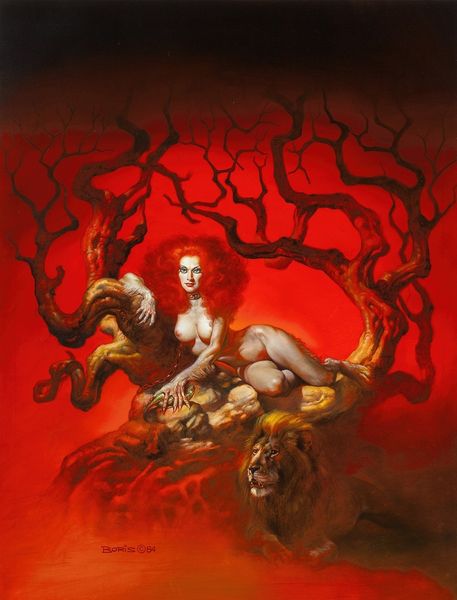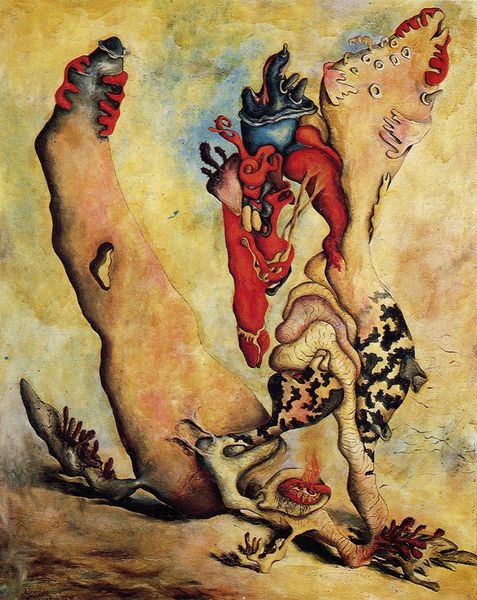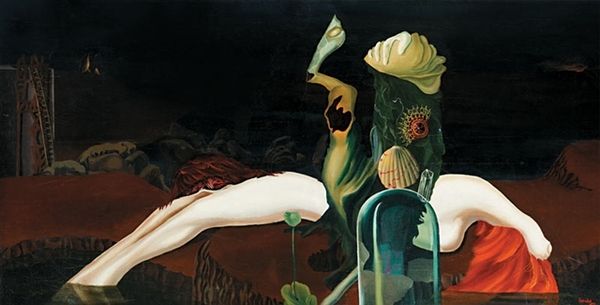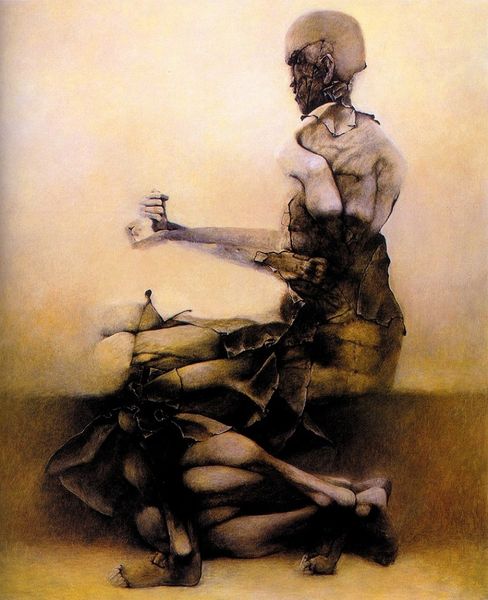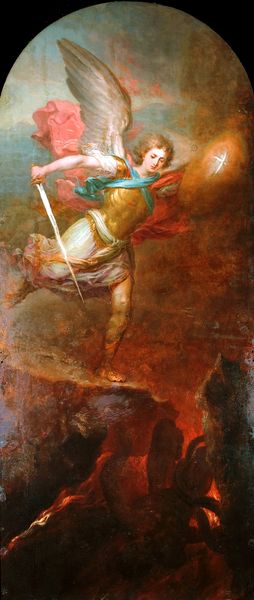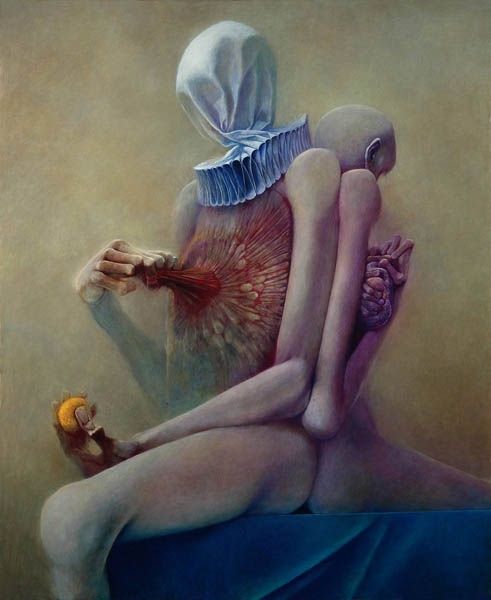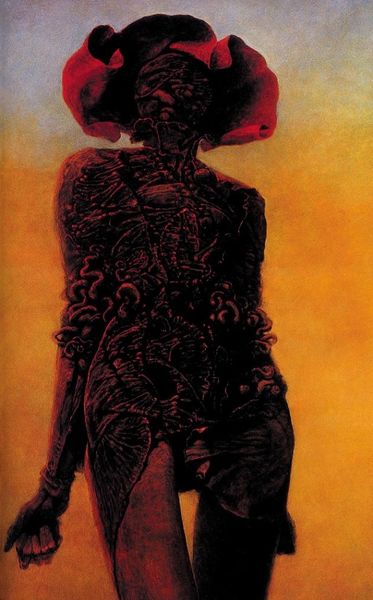
oil-paint
#
narrative-art
#
oil-paint
#
landscape
#
fantasy-art
#
figuration
#
oil painting
#
animal portrait
#
mythology
#
erotic-art
Copyright: Fair use
Editor: So, here we have Frank Frazetta’s "Serpent", rendered in oil paint. There's a real tension between the figure and the constricting snake; it feels very immediate and visceral. How would you approach an interpretation of this work? Curator: For me, it’s crucial to consider Frazetta’s process and materials. How does his application of oil paint –thick, almost sculptural in places – contribute to the scene’s dynamism and brutality? Look at how he builds up layers, creating texture. Also, thinking about the broader social context, consider the pulp magazines Frazetta worked for, often producing work quickly and cheaply. Editor: So, the means of production and consumption are central here. But doesn’t that background kind of cheapen or commercialize art? Curator: Not necessarily! It invites us to consider the hierarchy we impose on art forms. Was Frazetta simply creating art for mass consumption, or was he engaging with the traditions of mythological painting but adapting to a new material context? How does labor become visible in the very surface of this oil painting? Think of the cultural impact, too: pulp art had its consumers and their tastes. The question becomes who does this imagery serve? Editor: It's interesting to think about the materials as linked to the audience. The physical quality really mirrors this intensity and maybe the quick consumption he knew it would undergo. It's also challenging how I previously considered what high and low art means. Thanks! Curator: Exactly! Thinking about the materiality pushes us to look beyond purely aesthetic judgments, to examine the conditions of the painting’s making and consumption. It also helps us think about its impact, how and by whom that work was circulated and consumed.
Comments
No comments
Be the first to comment and join the conversation on the ultimate creative platform.
